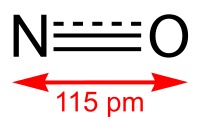
Photo from wikipedia
Electrochemical ammonia synthesis that utilizes renewable electricity in the nitrogen reduction reaction (NRR) has recently been remarkably considered. Of particular importance is to develop efficient electrocatalysts at low costs. Herein,… Click to show full abstract
Electrochemical ammonia synthesis that utilizes renewable electricity in the nitrogen reduction reaction (NRR) has recently been remarkably considered. Of particular importance is to develop efficient electrocatalysts at low costs. Herein, highly selective nitrogen capture using porous aluminum-based metal-organic frameworks (MOFs) materials, MIL-100 (Al), is first designed for the electrochemical nitrogen fixation in alkaline media under ambient conditions. Owing to the unique structure, MIL-100 (Al) exhibits remarkable NRR properties (NH3 yield: 10.6 µg h-1 cm-2 mgcat.-1, Faradaic efficiency: 22.6%) at a low overpotential (177 mV). Investigation indicates that the catalyst shows excellent N2-selective captures due to the unsaturated metal sites binding with N2. More specifically, as Al 3p band can strongly interact with N 2p orbitals, Al as a main-group metal presents a high and selective affinity to N2. The utilization of multifunctional MOF catalysts delivers both high N2 selectivity and abundant catalytic sites, resulting in remarkable efficiency for NH3 production.
Journal Title: ACS applied materials & interfaces
Year Published: 2020
Link to full text (if available)
Share on Social Media: Sign Up to like & get
recommendations!